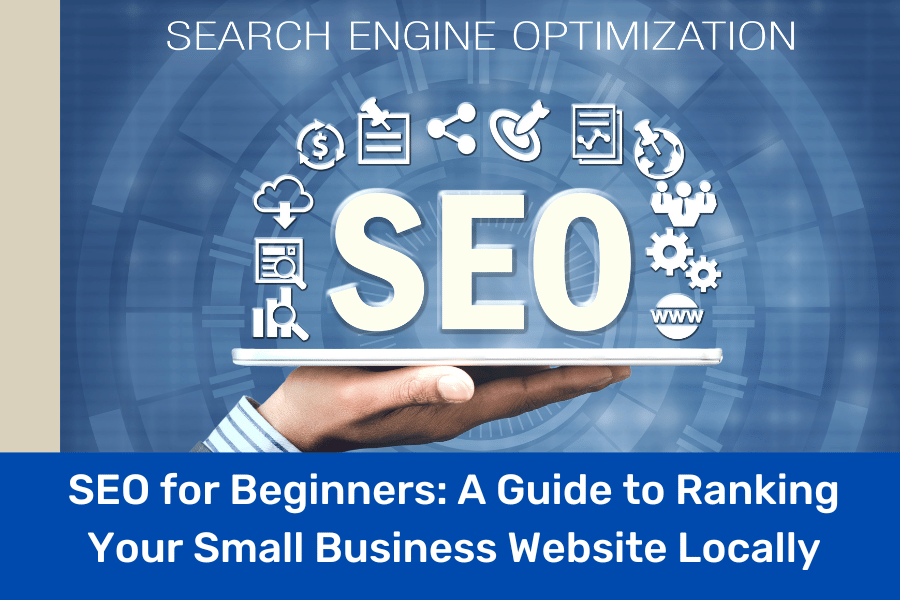If you’re a small business owner, chances are you’ve heard the term “SEO” more times than you can count. But what does it really mean, and more importantly, how can it help people in your area find you instead of your competitors?
Search Engine Optimization (SEO) might sound complicated, but it’s really just about making sure your website shows up when someone searches online for what you offer. Whether you run a local coffee shop, HVAC service, or boutique, SEO helps people in your town find your business faster.
Let’s break it down in simple terms so you can start seeing results without getting overwhelmed.

Start with the Right Keywords
Think of keywords as the words and phrases people type into Google when they’re looking for a business like yours. If you own a bakery in Round Rock, someone might search for “best cupcakes in Round Rock” or “birthday cakes near me.”
Here’s how to do basic keyword research:
- Use free tools like Google Keyword Planner or Ubersuggest. Type in services you offer and see what search terms come up.
- Focus on long-tail keywords. These are longer, more specific phrases like “emergency plumber in Georgetown TX.” They’re easier to rank for and usually mean someone is ready to buy.
- Include location-specific words. Always pair your service with your city or region.
Once you have your list of keywords, place them naturally on your website:
- In your page titles and headings
- In your page URLs (e.g., yourwebsite.com/round-rock-donuts)
- In your meta descriptions
- In your image file names and alt tags
- Throughout your page content, without overstuffing
Why On-Page SEO Matters
On-page SEO refers to all the elements you control directly on your website. Search engines like Google read your site to determine what it’s about and who it’s intended for. If you don’t clearly explain it, Google won’t know who to show it to.
Here’s what you should focus on:
- Title tags and meta descriptions. These are the first things people see when they search for information on Google. Keep your titles to 60 characters or less and your meta descriptions to 160 characters or less. Use your keywords!
- Header tags (H1, H2, H3). Break your content into sections using headers that include keywords.
- Fast load speed and mobile-friendly design. If your site is slow or hard to use on a phone, visitors (and Google) will leave.
- Clear calls to action. Inform visitors about the desired action: call, book an appointment, or visit your location.
Great on-page SEO is like putting up a bright, clear sign on your storefront. It helps people know they’re in the right place.
Get Noticed with Backlinks and Local Citations
Once your site is in good shape, it’s time to get noticed around the web. That’s where backlinks and local citations come in.
Backlinks are links from other websites to yours. Google sees them as a vote of confidence. The more high-quality backlinks you have, the more trustworthy your site appears.
How to get backlinks:
- Ask local partners, vendors, or Chamber of Commerce groups to link to your site
- Submit guest blog posts to local business blogs
- Get featured in local news stories or directories
Local citations are mentions of your business name, address, and phone number (NAP) on other websites, even if they don’t link to you.
Make sure your info is consistent across platforms like:
- Google Business Profile
- Yelp
- YellowPages
- Local business directories
The key is consistency. Don’t write “123 Main St.” on one site and “123 Main Street” on another. It confuses search engines and may hurt your rankings.
Use Free Tools to Track Your SEO Progress
You’ve done the work, how do you know if it’s paying off? There are free tools that can help you track what’s working and what’s not.
Google Analytics shows how many people are visiting your site, where they’re coming from, and what pages they’re looking at. You’ll learn things like:
- Which keywords are bringing in traffic
- How long people are staying on your site
- What devices they’re using
Google Search Console is another excellent (and free) tool. It tells you:
- What search terms do people use to find you
- If your site has any errors
- How many clicks and impressions do your pages get on Google
These tools help you stay focused on what’s working and improve what’s not. You don’t have to be a tech wizard; you just need to log in and start exploring.
FAQs
1. How long does it take to see results from SEO?
Most local SEO efforts begin to show results within 3 to 6 months, although this timeframe can vary depending on your competition and the consistency of your updates.
2. Do I need to blog for SEO to work?
While not required, blogging helps. Fresh content informs Google that your site is active, and it provides you with more opportunities to rank for keywords.
3. Can I do SEO myself, or should I hire someone?
Many small business owners begin by handling their own SEO. However, as your business grows, a professional can help accelerate results and prevent costly mistakes.
Want your website to rank higher and bring in more local customers? Start with a free local SEO audit from Digital Donkey Marketing.

Leave a Reply